
西周兴亡史研究
正版图书,可开发票,请放心购买。
¥ 289.45 7.3折 ¥ 398 全新
库存12件
广东广州
认证卖家担保交易快速发货售后保障
作者杜勇
出版社科学出版社
ISBN9787030751706
出版时间2024-03
装帧平装
开本其他
定价398元
货号1203222110
上书时间2024-03-21
- 店主推荐
- 最新上架
商品详情
- 品相描述:全新
- 商品描述
-
目录
目录绪论 / 001第一章 周人的崛起 / 010第一节 周人始祖后稷的传说 / 010一、关于后稷弃的时代问题 / 010二、后稷族居地在关中不在晋南 / 017三、后稷出世神话的文化意义 / 023第二节 周人居豳时代的发展 / 029一、公刘迁豳与创建新邦 / 029二、豳都地望考辨 / 035三、豳人社会生活 / 040第三节 从迁都周原到东徙丰镐 / 047一、周人迁岐的战略指向 / 047二、季历继位与征伐戎狄 / 060三、文王东进战略的强力推进 / 066第二章 武王克商与共主嬗易 / 105第一节 武王伐纣及其年代 / 105一、武王继位未尝改元 / 105二、武王伐纣路线与日程 / 110三、周人何以“克昏夙有商” / 128第二节 周邦政治角色的转换 / 140一、武王开国在位年数 / 140二、“民心惟本”的治国理念 / 143三、武王大分封与三监封地 / 147第三章 周公东征与东封 / 164第一节 管蔡启商以叛 / 164一、地方控制的制度性缺失 / 164二、王权名与实的分离 / 166三、内乱与外患的交织 / 172第二节 周公二度东征 / 175一、成世铜器鉴别 / 176二、周公东征 / 181三、成王东征 / 194第三节 东方大藩次第封建 / 199一、卫国 / 199二、燕国 / 208三、鲁国 / 220四、齐国 / 228第四章 宅兹中国乂民 / 235第一节 东都成周的营建 / 235一、双城与一城之争 / 235二、东都成周的地理位置 / 241三、成周地名内涵的变化 / 245第二节 怀柔与迁殷 / 251一、徙微封宋 / 251二、殷遗民西迁后的境遇 / 253三、鲁卫治下的殷遗民 / 257第三节 异姓古国的显微 / 262一、圣胄之国 / 262二、北国 / 265三、 国 / 276四、孤竹 / 294第五章 经略四方 / 317第一节 康王分封与征伐 / 317一、重新认识周初治世 / 317二、新封与徙封诸侯 / 319三、南巡伐虎方 / 326四、盂伐鬼方 / 337第二节 昭王南征楚荆 / 343一、两次南征史迹厘正 / 343二、楚居丹阳识地 / 348三、广惩楚荆 / 356第六章 制度文明 / 362第一节 嫡长子继承制 / 362一、商代王位继承制的特质 / 362二、周邦从立贤到立嫡的演变 / 373三、两种性质的兄终弟及 / 381四、继统法变革的新进境 / 385第二节 三公之制 / 387一、竹书《祭公》的新发现 / 387二、三公姓氏、封地与职爵 / 390三、三公合议制中央政府的运行 / 398第三节 从井氏家族看世卿制度 / 410一、井氏家族姓氏 / 410二、井氏居邑寻踪 / 415三、世卿制的双重功能 / 422第七章 西周中期王道衰微 / 430第一节 穆王政失常轨 / 430一、肆欲西游 / 430二、西征东伐 / 434三、大兴赎法 / 441第二节 共懿孝夷四王 / 446一、王位继统的失范 / 446二、贵族力量的膨胀 / 453三、土地管理的松弛 / 461第八章 厉王革典与共和行政 / 471第一节 厉王革典的多维审视 / 471一、对外战争成败 / 471二、专利政策利弊 / 481三、千秋功罪评说 / 487第二节 共和行政的历史真相 / 492一、“共伯和干王位”衡短论长 / 492二、二相共和说的是非得失 / 497三、共伯和以首席执政摄行王政 / 501第九章 西周的衰亡 / 510第一节 宣幽时期对外族的战争 / 510一、对东南蛮夷的战争 / 510二、对西戎狁的战争 / 519三、千亩之战的危局 / 536第二节 频世政治乱象 / 546一、历史幻影:宣王中兴 / 546二、祸起萧墙:褒姒夺嫡 / 555三、自乱阵营:申曾叛周 / 562第三节 宗周陨灭与平王东迁 / 572一、幽王政权的倾覆 / 572二、平王东迁的曲折历程 / 588三、晋、郑、秦三君年代指迷 / 597四、历史变局中的文明接续 / 607附录 / 617附录一 中华文明五千年的学理问题 / 617附录二 西周年代学研究的新视野 / 630附录三 关于令方彝的年代问题 / 637附录四 曾公编钟破解康宫难题 / 655附录五 关于清华简《保训》的著作年代问题 / 660附录六 清华简:开启古史研究新境界 / 673参考文献 / 679索引 / 714后记 / 724CONTENTSIntroduction / 001CHAPTER 1 THT RISE OF THE ZHOU PEOPLE / 0101.1 The Mythology of the Zhou’s Ancestor Hou Ji / 0101.1.1 The Time of Hou Ji/Qi (the Lord of Millet) / 0101.1.2 An Investigation into the Location of Hou Ji and his Group / 0171.1.3 The Cultural Significance of the Mythology of Hou Ji’s Birth / 0231.2 The Development of Zhou when Habilitating at Bin / 0291.2.1 Gong Liu’s Migration to Bin and the Establishment of the New State / 0291.2.2 An Inquiry of the Location of Bin / 0351.2.3 The Social Life at Bin / 0401.3 Zhou’s Move from the Zhouyuan to Fenghao / 0471.3.1 The Strategic Orientation of the Migration to Qi / 0471.3.2 The Succession of Jili and the Military Campagin against Rong&Di / 0601.3.3 The Implementation of the Eastward Strategy under King Wen / 066CHAPTER 2 THE CONQUEST OF SHANG AND THE DYNASTIC CHANGE / 1052.1 The Date and Process of the Conquest of Shang / 1052.1.1 No New Regnal Era after King Wu’s Succession / 1052.1.2 The Itinerary of the Conquest / 1102.1.3 The Reason of “Occupation of Shang by the Dawn” / 1282.2 The Policy Transformation of the Zhou State / 1402.2.1 An Inquiry of the Length of King Wu’s Reign after the Conquest / 1402.2.2 The Governance Idea of “Rooted in People’s Heart” / 1432.2.3 The Enfeoffment under King Wu and the Establishment of Three Guards / 147CHAPTER 3 THE CONQUEST AND THE ENFEOFFMENT UNDER ZHOU GONG / 1643.1 The Rebellion of the Three Guards / 1643.1.1 The Institutional Defects regarding the Control outside the Capital Region / 1643.1.2 The Separation of the Kingship’s Substance and Denomination / 1663.1.3 The Complex Disorders inside and outside the Zhou State / 1723.2 The Second Military Campaign to the East / 1753.2.1 The Identification of the Bronzes dating back to King Cheng’s Reign Period / 1763.2.2 The Military Conquest Eastwards under Zhou Gong / 1813.2.3 The Military Conquest Eastwards under King Cheng / 1943.3 The Enfeoffment in the East / 1993.3.1 The Vassal State Wei / 1993.3.2 The Vassal State Yan / 2083.3.3 The Vassal State Lu / 2203.3.4 The Vassal State Qi / 228CHAPTER 4 RULING THE CENTRAL KINGDOM / 2354.1 The Establishment of the Eastern Capital Chengzhou / 2354.1.1 The Debate between Single or Dual Capitals / 2354.1.2 The Location of the Eastern Capital Chengzhou / 2414.1.3 The Meaning of the Toponym Chengzhou / 2454.2 Cherishing the Yin Adherents and the Relocation of Yin People / 2514.2.1 The Foundation of the Song State / 2514.2.2 The Situation of Yin People after the Relocation / 2534.2.3 Yin People under the Supervision by Lu and Wei / 2574.3 The History of Non-Ji (Non-Royal) States / 2624.3.1 The States Ruled by the Adherents of Former Kings / 2624.3.2 The Bei State / 2654.3.3 The Ji State / 2764.3.4 The Guzhu State / 294CHAPTER 5 THE NATIONWIDE GOVERNANCE / 3175.1 The Enfeoffment and Military Campaigns under King Kang / 3175.1.1 Revisiting the Prosperous Period of the Early Western Zhou / 3175.1.2 New Enfeoffment and Relocation of Vassal States / 3195.1.3 The Military Campaign against Hufang in the South / 3265.1.4 The Military Campaign against Guifang / 3375.2 The Military Campaign again Jin-Chu in the South / 3435.2.1 An Exploration of the Itineraries of the Two Campaigns / 3435.2.2 An Inquiry of the Location of Danyang of Chu / 3485.2.3 The Punishment of Jin-Chu / 356CHAPTER 6 THE INSTITUTIONAL ACHIEVEMENTS OF THE WESTERN ZHOU / 3626.1 The Zhou Practise of Primogeniture / 3626.1.1 The Idiosyncrasies of the Shang Succession / 3626.1.2 The Transformation from Choosing the Sage to Choosing the Eldest / 3736.1.3 Two Forms of Agnatic Seniority / 3816.1.4 The New Developments of the Succession Institutions / 3856.2 The System of Three Excellencies / 3876.2.1 The Finding of the Bamboo Stripes “Zhai Gong” / 3876.2.2 The Ancestral Name, the Fief, and the Title of the Three Excellencies / 3906.2.3 The Operation of the Central Government under the System of Three Excellencies / 3986.3 The Hereditary System from the Viewpoint of “Xing Family” / 4106.3.1 The Ancestral Name of the “Xing Family” / 4106.3.2 The Location of the “Xing Family Family” / 4156.3.3 The Dual Functionalities of the Hereditary System / 422CHAPTER 7 THE DECLINE OF GOVERNANCE IN THE MIDDLE WESTERN ZHOU PERIOD / 4307.1 The Political Disorder under King Mu / 4307.1.1 The Parades to the West at Pleasure / 4307.1.2 The Military Campaigns / 4347.1.3 The Abuse of Atonement Policy / 4417.2 The Period of King Gong, King Yi, King Xiao, and King Yi / 4467.2.1 The Disarray of Succession / 4467.2.2 The Dilation of Aristocrasies / 4537.2.3 The Laxation of Land Management / 461CHAPTER 8 THE REFORM UNDER KING LI AND THE GONGHE REGENCY / 4718.1 Multiple Aspects of King Li’s Reform / 4718.1.1 The Achievements and Failures of Military Campaigns / 4718.1.2 The Merits and Detriments of the Monopolisation Policy / 4818.1.3 An Assessment of King Li’s Status in the History / 4878.2 The Historical Facts of the Gonghe Regency / 4928.2.1 The Debate of Gong Bo He’s Regency / 4928.2.2 The Gains and Losses of the Dual Chancellors Regency / 4978.2.3 The Regency under Gong Bo He as the Prime Regent / 501CHAPTER 9 THE DOWNFALL OF THE WESTERN ZHOU / 5109.1 The Military Campaigns against non Han-Chinese Groups under King Xuan and King You / 5109.1.1 War with the Local Groups in the East and in the South / 5109.1.2 War with Xianyun in the West / 5199.1.3 The Crisis of the Battle at Qianmu / 5369.2 The Continuous Political Disorder / 5469.2.1 The Rejuvenation under King Xuan / 5469.2.2 The Chaos inside the Court Caused by Bao Si / 5559.2.3 The Betrayal of Sheng Zeng / 5629.3 The Downfall of Zongzhou and the Capital Move under King Ping / 5729.3.1 The Overthrow of King You’s Regime / 5729.3.2 The Hindered Process of the Capital Move under King Ping / 5889.3.3 An Chronological Investigation of the Jin, the Zheng, and the Qin Vassals / 5979.3.4 The Cultural Continuity in the Historical Changes / 607APPENDIX / 6171.1 On the Theoretical Aspects of the Five-thousand-year Civilisation in China / 6171.2 New Perspectives of the Chronology of the Western Zhou Period / 6301.3 An Chronological Inquiry of the Ling Fang Li / 6371.4 New Interpretation of the Temple of Kang Based on the Finding of Zeng Gong Qiu Bianzhong / 6551.5 Remarks on the Writing Era of the Tsinghua Bamboo Stripes “The Admonition of Protection” (“Bao Xun”) / 6601.6 New Improvement Conduced by the Tsinghua Bamboo Stripes / 673REFERENCES / 679INDEX / 714POSTSCRIPT / 724
内容摘要
本卷主要研究周族如何从一个蕞尔小邦发展起来,终致伐纣灭商,成为新的天下共主。西周国家建立后,历时二三百年,经过由兴而盛、由盛而衰的漫长岁月,最后在多彩多姿的历史舞台谢幕。本书除了反映这一复杂的历史过程外,也要对其文明兴亡的原因加以探索,以便从中得到有益的启示。
— 没有更多了 —



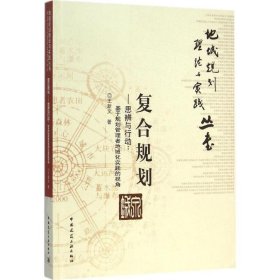
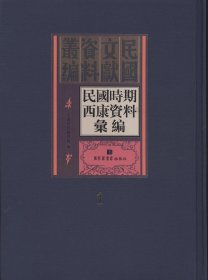
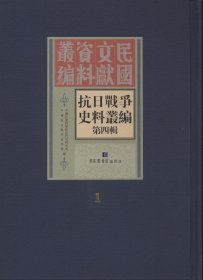
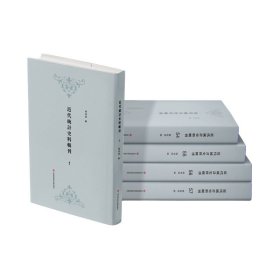
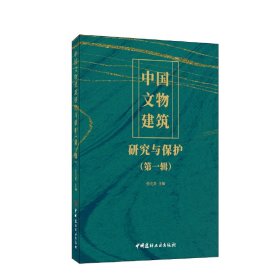





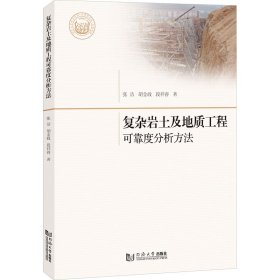

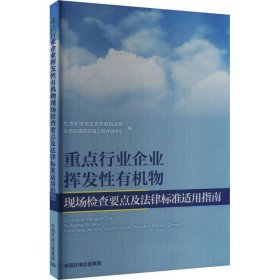



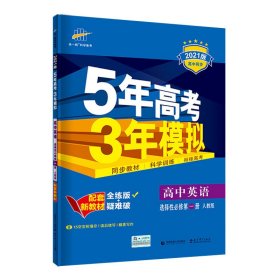

以下为对购买帮助不大的评价